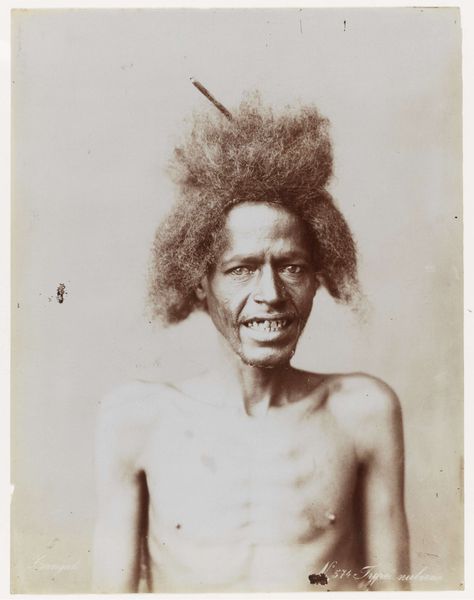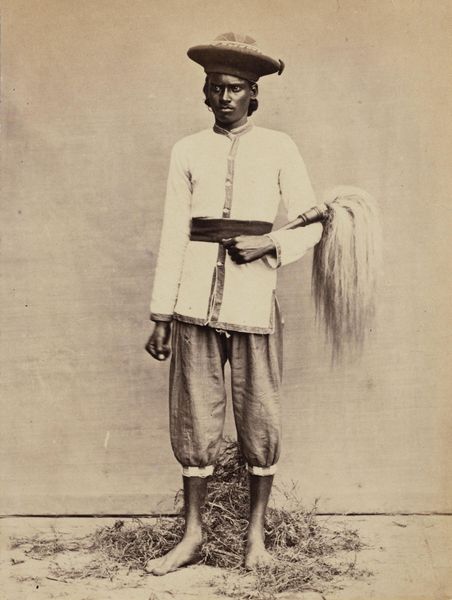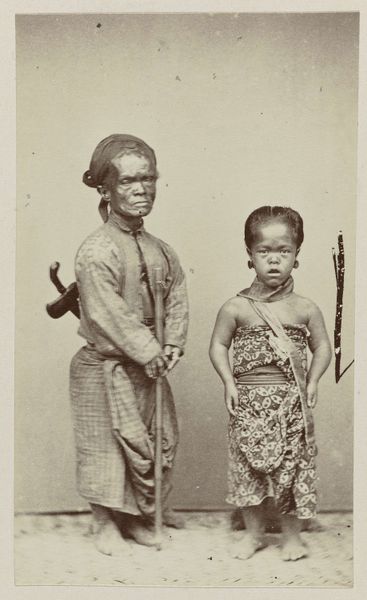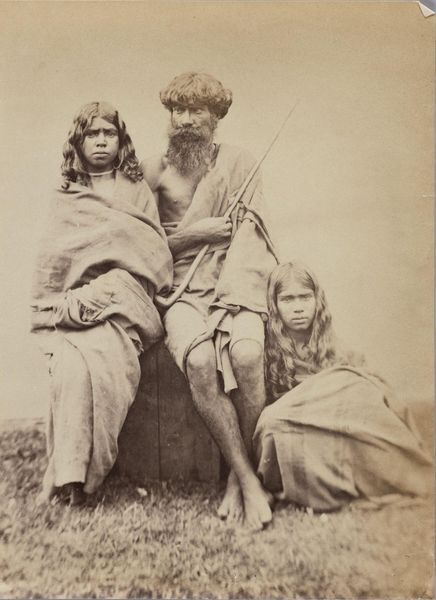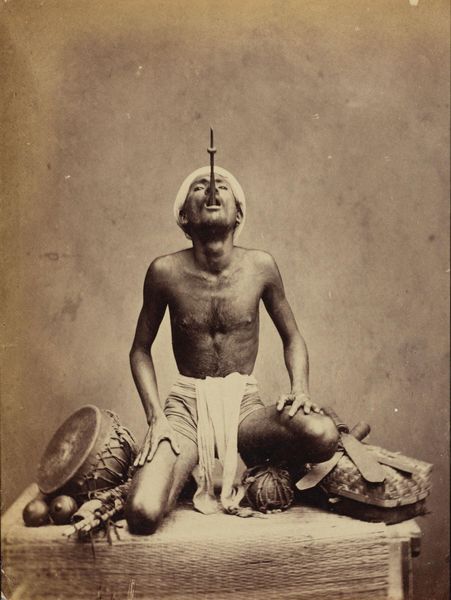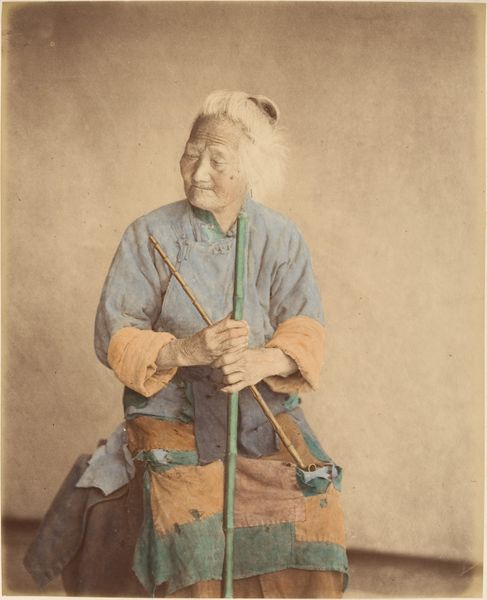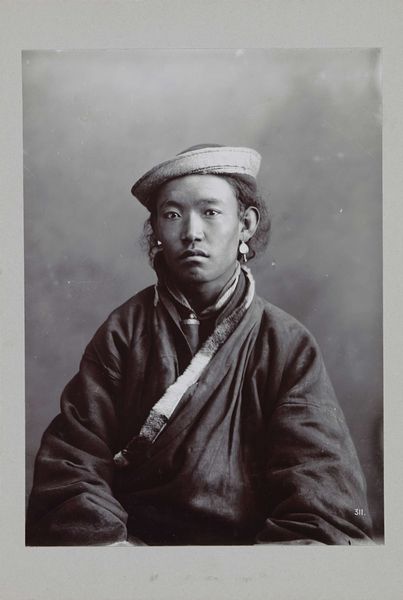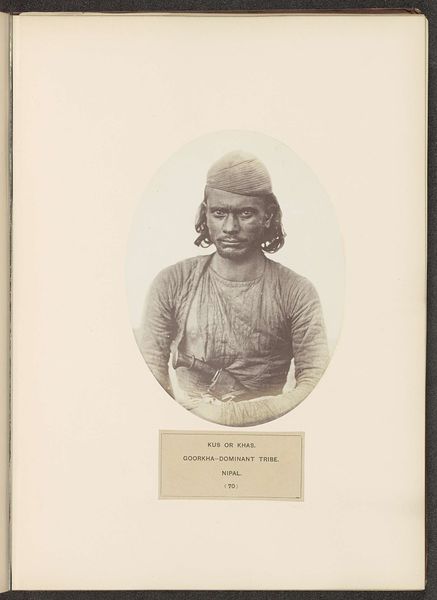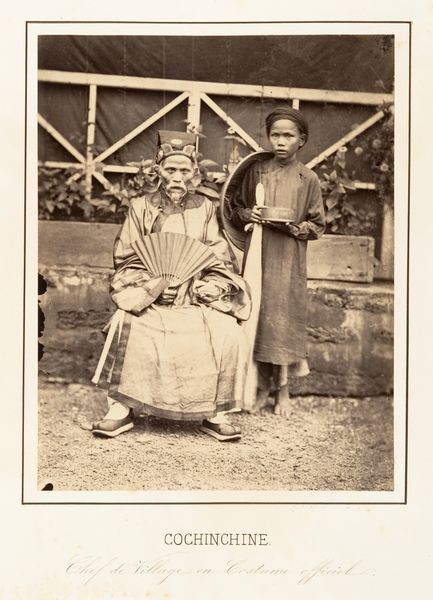
photography
#
portrait
#
african-art
#
photography
#
19th century
#
realism
Dimensions: height 95 mm, width 57 mm
Copyright: Rijks Museum: Open Domain
Editor: Here we have Woodbury & Page’s “Portret van een bedelaar,” or "Portrait of a Beggar," created sometime between 1860 and 1870. It’s a photographic print, and honestly, the starkness of the image is really striking. The subject’s pose, his clothing—or lack thereof—and the neutral backdrop all contribute to a somber, almost confrontational mood. What do you see in this piece from a formal perspective? Curator: Formally, the piece operates through a calculated simplicity. Consider the limited tonal range—primarily sepia—which flattens the subject, reducing depth and emphasizing surface texture. The composition is rigorously frontal; the figure is centered, and even the supporting bench echoes this linearity, creating a stable, almost architectural arrangement. It is a visual study, therefore, in texture and light. Editor: So, the artist’s focus was on form over any attempt at sentimentality? Curator: Precisely. There's a strategic deployment of light that reveals every wrinkle, every imperfection. Observe how the light catches the roughness of the wooden staff, drawing attention to the tactile qualities of the materials depicted, further grounding the image in materiality. The lack of depth of field keeps everything relatively sharp and pushes the viewer into a direct and clinical encounter with the subject. Editor: It’s interesting how focusing on just the visual elements can remove some of the inherent emotional response to the subject. Curator: That’s exactly it. By prioritizing form and composition over subjective expression, Woodbury & Page transform what might otherwise be read as a sentimental depiction into a study of texture, light, and compositional balance. Editor: I’ve never thought about photography in quite this way, separating it from its documentary nature and considering it through pure composition. Curator: Considering the interplay of light, texture, and form, the artists achieve a visual harmony. The work isn't just an artifact, it’s a study in visual architecture, skillfully orchestrated.
Comments
No comments
Be the first to comment and join the conversation on the ultimate creative platform.


